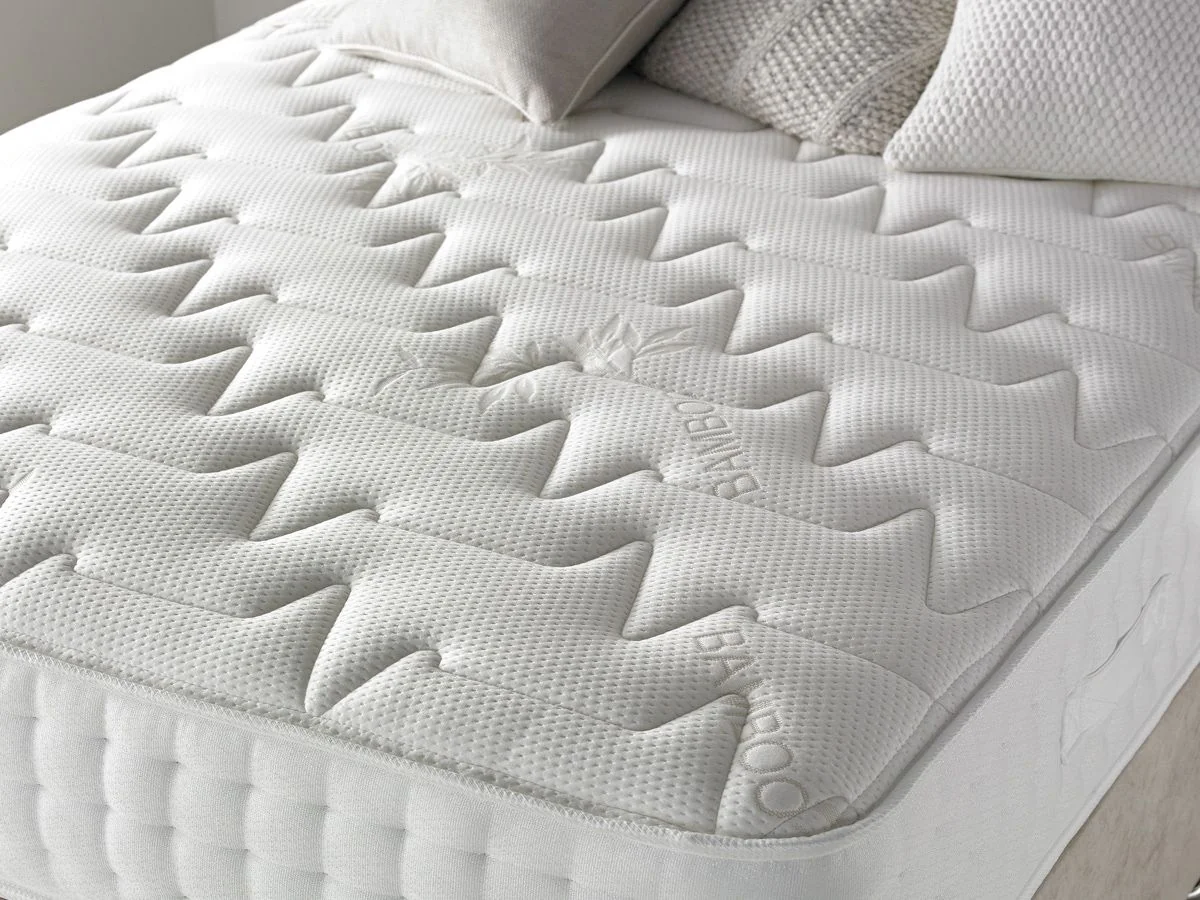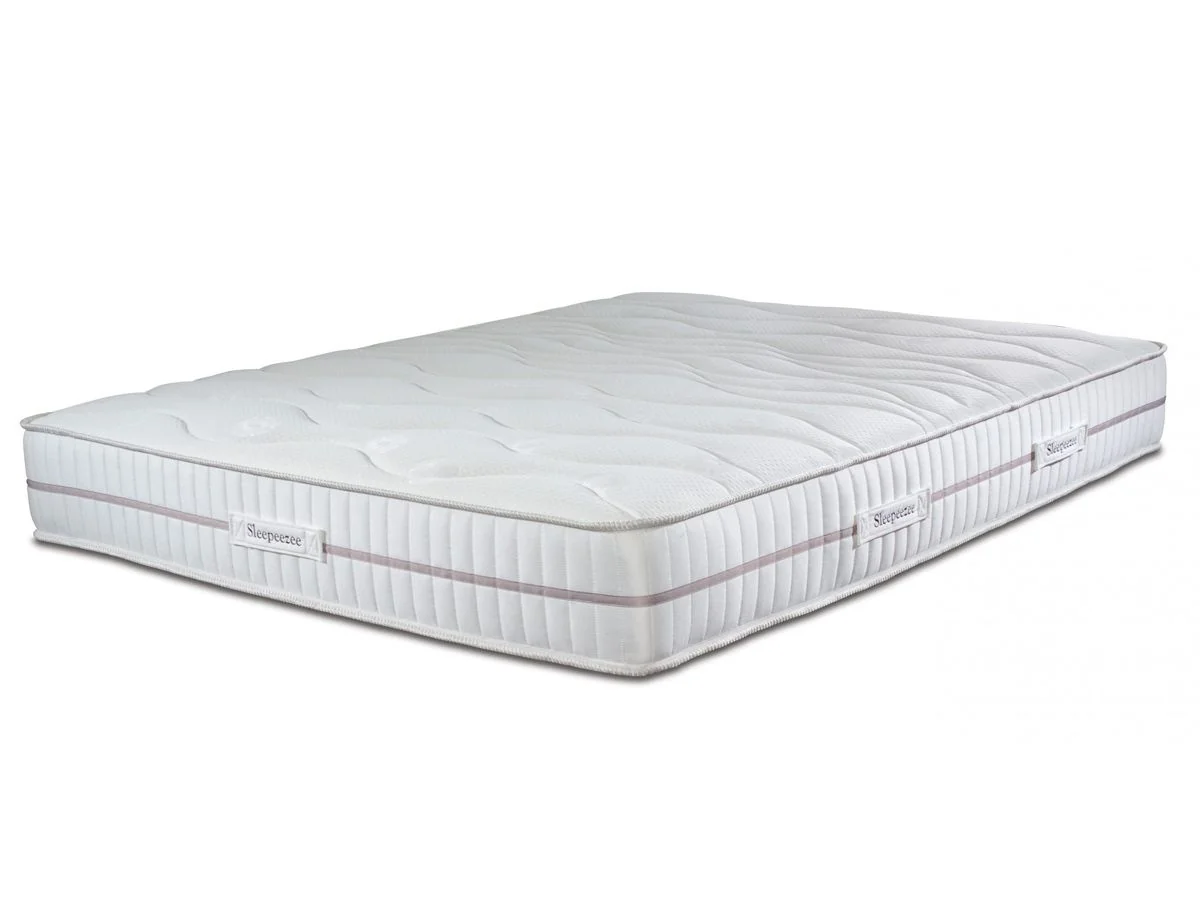Free UK Delivery*
0% Finance Available
Old Bed & Mattress
Sleep Talk Blog, Bed and Mattress Guides
What Type Of Mattress Lasts The Longest? We Look at 5 Mattress Types.
What type of mattress lasts the longest?
For ultimate longevity, pure foam mattresses (memory foam, latex foam, polyfoam) last longer than mattresses with springs.
People often say a good mattress should last ten years, but does this generalisation apply to all mattresses?
In the real world, we jump and bounce into bed, don't rotate or turn our mattresses regularly, and don't clean our mattresses regularly. It means the idyllic scenario of a new mattress after a few years is rare.
And yet, ten years is a good benchmark for all mattresses designed to be robust and stand up to the rigours of human life. It is rare for mattresses to need replacing before ten years unless they are damaged.
Of course, some mattresses can last longer than ten years. Mattresses with no moving parts are less likely to fail (e.g., pure foam mattresses), and mattresses with pocket springs are less likely to fail than mattresses with open coil springs.
Open coil mattresses
Open coil mattresses last between five and eight years, depending on how frequently they are used. If you sleep on it every night, you can expect it to last five and eight years before getting lumpy.
Open coil technology uses a bed of interlocked springs; when one spring fails, it impacts the integrity of the bed, leading to sagging.
Pocket spring mattresses
Pocket spring mattresses last around ten years. They have individual pocket springs sewn into pockets, so when one spring fails, it doesn't affect the rest of the mattress, maintaining its integrity.
Pocket spring mattresses are also more expensive than open coil mattresses, so they often have better, longer-lasting materials.
Memory foam mattresses
Memory foam mattresses last between ten and twelve years. However, the foam is susceptible to piercing damage and extreme abrasion. You must look after a memory foam mattress to get the most extended life.

Memory foam also has a finite shelf life – the foam breaks down over time, and twelve years is considered the limit with intense use.
Latex mattresses
Latex mattresses use a high-density foam that springs back, unlike memory foam which compresses and rises slowly. High-density foams last longer than low-density foams, and you can expect a latex mattress to last up to ten years.
Like memory foam, latex foam can easily damage with sharp objects and rip. This means it needs looking after.
Hybrid mattresses
Hybrid mattresses last around ten years because the compact innerspring systems and memory foam layers are balanced to reduce wear. Some hybrid mattresses will last longer than ten years, although this depends on use.
Hybrid mattresses are not the same as spring mattresses with memory foam; hybrids have a thicker foam layer and a compact spring system.

What type of mattress is least likely to sag?
We often think of a sagging bed when we think of mattress failures, which happen when the mattress's support layer fails.
Open coil mattresses are the most likely to sag because the interlocked spring bed is only as strong as the links in the chain. In contrast, pocket spring mattresses have individual springs that do not cause sagging when they fail.
Memory foam and latex foam mattresses do not sag, but the foams can degrade over time, creating soft spots, also known as sink spots.
Can a mattress last more than 20 years?
Twenty years is pushing it for a mattress, no matter its composition.
For a mattress to last twenty years and sleep like new, it must be rarely used and made from materials that degrade slowly. Most mattresses are designed to last ten years, so doubling the lifespan will naturally have varied results.
The biggest problem is the adhesion between layers and the degradation of materials. Once separated, the layers in a bed are spent, and foams and fibres that lose structural integrity can feel like a crisp packet when they age.
How to increase the lifespan of your mattress?
A mattress is probably one of the larger purchases a person can make, so you want to prolong its life and look after it. For this to happen, it will depend on several factors, including the materials it is made from, usage, care and maintenance.
Below are some valuable tips for doing this.
- Use a mattress protector.
Liquid and bodily fluids can damage a mattress and produce mould and nasty odours. You also sweat through the night and shed skin cells absorbed into your mattress. So, to help with these, use a waterproof mattress protector, as it's challenging to clean up spills etc., once it's soaked into your mattress. You can wipe immediately with a mattress protector before it gets into the mattress.
2. Clean your bedding regularly
It would be best to wash your bedding at least every week, as it collects skin cells, dirt, and mites, including body oils, every day through use that soaks into the mattress. This is an excellent time to remove your mattress protector and wash it, giving the bed an airing.
3. Clean your mattress regularly
Every month strip your bed and vacuum the surface and seams of the mattress to reduce dust and debris. You can sprinkle baking soda beforehand to soak moisture, such as sweat and odours.
4. Ensure your mattress is supported
Check your bed frame and base every few months to ensure they are in good shape. No weak or broken slats or broken edges for the mattress to sit on will contribute to quicker wear and reduce comfort for you. At this time, rotate the mattress as this will promote even wear and reduce impressions, extending the life of the mattress.
5. Get pets their beds
You don't know where your pet has always been when settling onto your bed. Your pet can bring with them their bugs and mites from outside.
Once on the bed, they sweat, drool and shed hair and can have the occasional accident. So, treat your pet to their bed, and if you really must have them on your bed, then buy a throw to put down to help protect your bedding.
.

